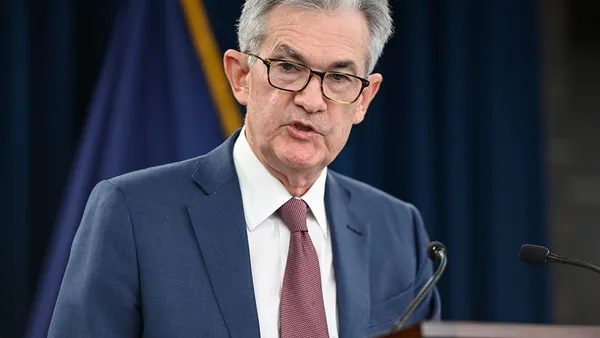Dive Brief:
- The global volume of so-called sustainable bonds will likely rise this year to a record exceeding $850 billion amid rising investor demand and improved standardization and disclosures that increase the credibility of the debt, Moody’s Investors Service said in a report.
-
Sustainable bonds — used for such purposes as financing projects in renewable energy and social projects in affordable housing — made up 8.7% of worldwide debt issuance during the first half of 2021 and may account for as much as 10% by the end of 2021, Moody’s said.
-
“Issuers across all segments of the market continue to explore how they can link their capital markets activities with their sustainability objectives, suggesting that sustainable bonds will only grow as a share of global debt issuance over time,” Moody’s Investors Service said.
Dive Insight:
Sustainability-related financing has tripled since 2015, with an eight-fold increase in sustainable debt issuance, according to a report by Generation Investment Management.
Estimates of the value for all types of sustainable investing exceed $35 trillion, Moody’s said.
Increased use of environmental, social and governance (ESG) principles for equity and debt investing has prompted regulatory concerns that many companies are “greenwashing,” or exaggerating their efforts to meet their ESG commitments.
“Failure to tackle greenwash poses a serious risk to the sustainable transition,” Generation said, noting “growing unease at the low quality of some net zero commitments, the gap between goals and actions and the absence of guardrails for those utilizing natural solutions, including as offsets.”
Securities and Exchange Commission (SEC) Chair Gary Gensler has flagged the hazard of greenwashing by fund managers and investment advisors.
The SEC said in a “risk alert” in April that some investment advisers, investment companies and private funds may have misguided investors about their approach to sustainable investing.
The SEC found in an examination that some investment firms lacked sufficient policies and procedures for ESG investing, provided “weak or unclear” documentation for ESG-related decisions and pursued compliance efforts that did not appear to safeguard against flawed disclosures or marketing information.
The SEC found “some instances of potentially misleading statements regarding ESG investing processes and representations regarding the adherence to global ESG frameworks,” according to a review by the Division of Examinations.
Tighter regulation will set a firmer foundation for investing in sustainable bonds, Moody’s said. The European Commission has proposed legislation that would create a European green bond standard.
An improved strategy toward sustainable finance announced last month by the European Union — including an emphasis on disclosing and monitoring ESG risks — “will gradually spur better ESG disclosures and improved sustainable bond credibility,” Moody’s said.
The International Capital Market Association (ICMA) in June updated its guidance for sustainable debt markets by emphasizing the need for debt issuers to provide greater transparency.
ICMA’s Green Bond Principles also include recommendations for the use of proceeds, reporting, management, and methods for project evaluation and selection. The association’s best practices will “support market growth and standardization,” Moody’s said.
“Despite the sizable increase in sustainable bond issuance in recent years, the market has ample room for further growth given the size of the sustainable investing universe, estimated at over $35 trillion in the latest report by the Global Sustainable Investment Alliance,” Moody’s said.












